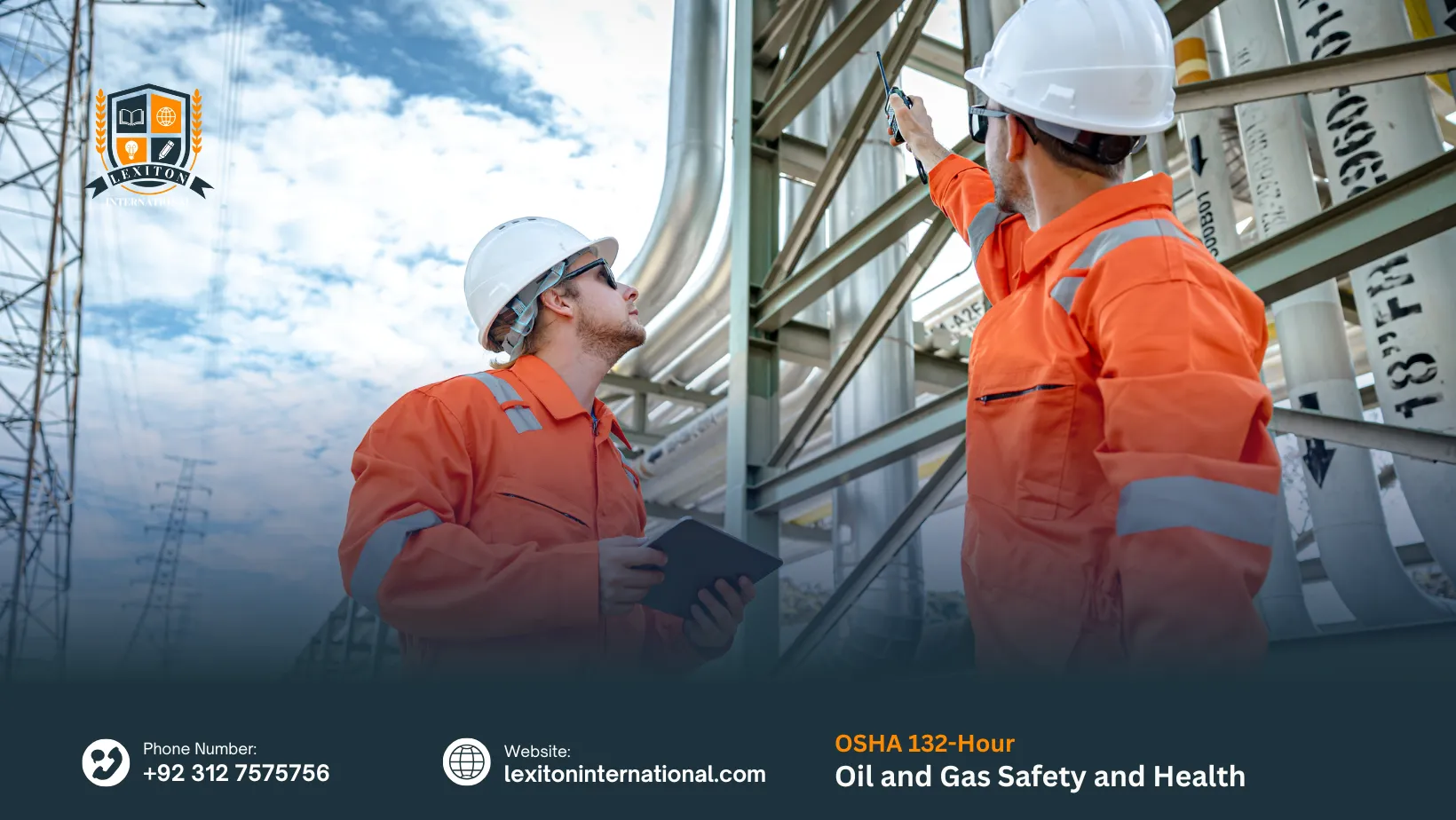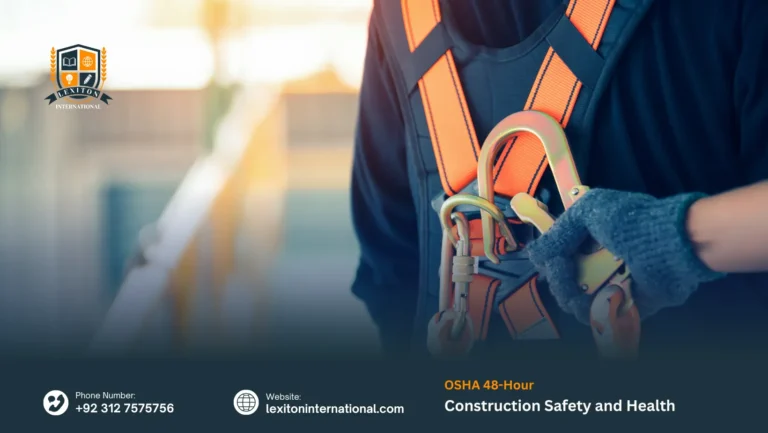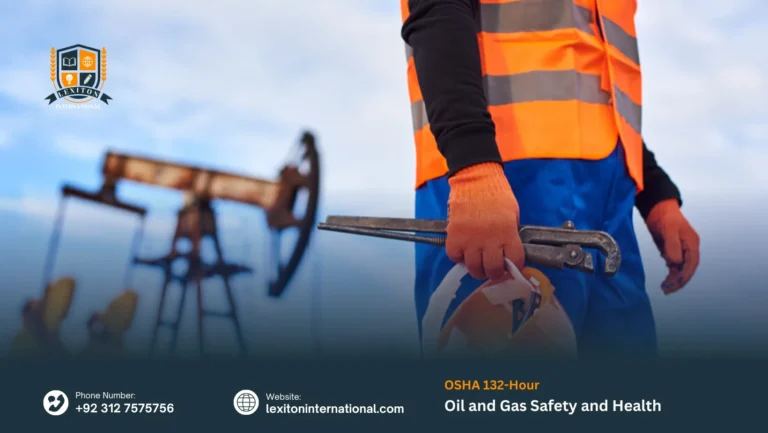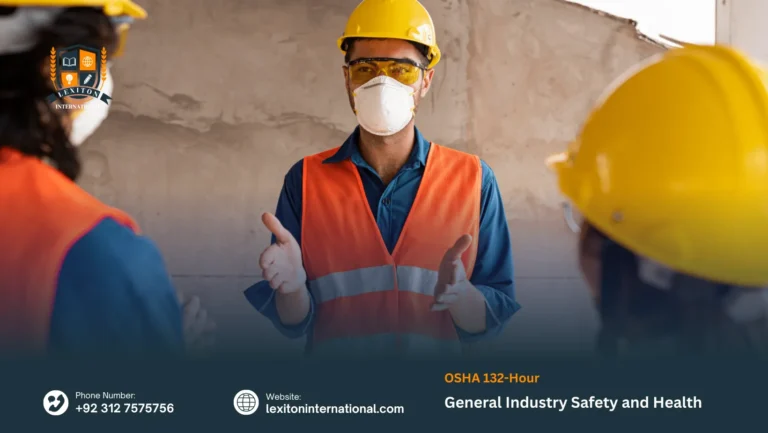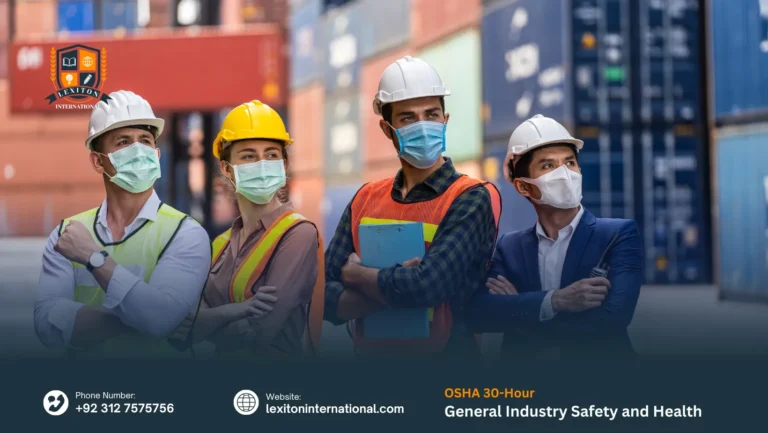The OSHA 132-Hour Oil and Gas Safety and Health course is a comprehensive program designed to equip learners with the knowledge, skills, and competencies required to maintain a safe and healthy working environment in the oil and gas industry. This course emphasizes the importance of compliance with OSHA standards, hazard recognition, risk assessment, and the implementation of effective safety protocols. By combining theoretical understanding with practical applications, learners gain the expertise needed to prevent workplace accidents, reduce risks, and ensure operational safety across all areas of oil and gas operations.
The course covers a wide range of safety and health topics including hazard communication, personal protective equipment (PPE), fire prevention, emergency response, environmental protection, and industrial hygiene. Participants will learn to identify potential hazards, conduct safety audits, and implement corrective measures in line with OSHA regulations. The program also focuses on leadership in safety management, enabling learners to foster a culture of safety within teams and organizations while promoting compliance with national and international safety standards.
Upon completion, learners will be prepared to contribute effectively to workplace safety initiatives, perform risk assessments, and implement safety programs in oil and gas facilities, including drilling sites, refineries, and production plants. This course provides a solid foundation for career advancement in health, safety, and environmental (HSE) roles, as well as the potential to pursue advanced certifications or specialized training in industrial safety. Graduates leave with the confidence and expertise to minimize hazards, protect personnel, and ensure regulatory compliance within complex oil and gas operations.
To ensure learners gain the maximum benefit from the OSHA 132-Hour Oil and Gas Safety and Health course, participants are expected to meet certain academic, professional, and language requirements. These criteria help confirm that learners have the necessary background to understand complex safety standards and apply them effectively in oil and gas environments.
- Age Requirement: Learners should typically be 18 years or older, as the course involves advanced health and safety concepts designed for professional settings.
- Educational Background: A minimum of a high school diploma (or equivalent) is required. Learners with vocational or technical training in oil and gas, engineering, or industrial safety are preferred.
- Work Experience: Candidates with 1–2 years of experience in oil and gas operations, industrial safety, or related sectors may be better prepared to apply course concepts practically.
- Technical Knowledge: Learners should have a basic understanding of industrial operations, machinery, and workplace safety practices relevant to oil and gas sites.
- English Language Proficiency: Non-native English speakers must have an IELTS score of 5.5, CEFR Level B2, or equivalent, to ensure full comprehension of safety protocols and technical terminology.
- Previous English Study: Evidence of prior education or work experience conducted in English can also satisfy the language requirement.
- Physical Fitness: Participants should be capable of performing safety drills, site inspections, and practical exercises that may require moderate physical activity.
Mandatory Units
This qualification, the OSHA 132-Hour Oil and Gas Safety and Health, consists of 10 mandatory units.
The OSHA 132-Hour Oil and Gas Safety and Health course is designed to provide learners with advanced knowledge and practical skills in occupational safety, hazard management, and regulatory compliance within the oil and gas industry. This intensive program equips participants to identify risks, implement safety protocols, and foster a strong safety culture, ensuring the protection of personnel, assets, and the environment in complex industrial settings.
Understand Advanced OSHA Regulations and Standards
- Explain advanced OSHA regulations and standards applicable to oil and gas operations
- Interpret legal and regulatory requirements to ensure workplace compliance
- Analyze safety policies and procedures in accordance with OSHA guidelines
- Evaluate the impact of OSHA standards on operational practices and employee safety
- Apply OSHA standards to develop and maintain effective health and safety programs
Advanced Hazard Identification and Risk Assessment
- Identify and categorize hazards specific to oil and gas workplaces
- Conduct comprehensive risk assessments for industrial processes and operations
- Evaluate potential consequences and likelihood of hazards impacting safety
- Develop strategies to mitigate or eliminate workplace risks
- Implement monitoring systems to continuously assess and manage hazards
Process Safety Management (PSM)
- Explain the principles and components of Process Safety Management in oil and gas facilities
- Analyze process hazards and evaluate control measures to prevent incidents
- Develop and implement safety procedures for complex industrial processes
- Assess process systems for compliance with PSM standards
- Apply best practices for maintaining safe operational processes and reducing risk
Emergency Preparedness and Response Planning
- Develop emergency response plans for oil and gas operations
- Identify potential emergency scenarios and establish appropriate response protocols
- Conduct drills and simulations to prepare teams for emergency situations
- Evaluate the effectiveness of emergency response strategies and revise plans accordingly
- Ensure coordination with regulatory agencies and emergency services during incidents
Health and Environmental Hazards
- Identify occupational health risks associated with oil and gas operations
- Assess environmental hazards and their impact on personnel and surrounding communities
- Develop strategies to control exposure to chemical, physical, and biological hazards
- Apply environmental protection practices in compliance with regulatory standards
- Monitor workplace conditions to ensure the health and safety of employees
Leadership and Safety Culture
- Promote a culture of safety within the organization and across teams
- Develop leadership skills to manage safety programs effectively
- Encourage employee engagement and participation in safety initiatives
- Implement strategies to reinforce safe practices and accountability
- Evaluate the effectiveness of leadership approaches in fostering a safety-conscious environment
Advanced Personal Protective Equipment (PPE)
- Identify appropriate PPE for specific hazards in oil and gas operations
- Demonstrate correct selection, use, and maintenance of PPE
- Evaluate the effectiveness of PPE in mitigating workplace risks
- Train personnel on proper PPE practices and compliance requirements
- Integrate PPE protocols into broader safety management systems
Safety Training and Education
- Design and deliver safety training programs for diverse workplace audiences
- Evaluate the effectiveness of training initiatives in promoting safe practices
- Incorporate adult learning principles into health and safety education
- Develop instructional materials and assessment tools for safety training
- Promote continuous learning and awareness of updated safety standards
Contractor and Vendor Safety Management
- Assess safety practices and compliance of contractors and vendors
- Develop safety agreements and contracts that meet regulatory requirements
- Monitor contractor performance and enforce safety standards on-site
- Conduct safety audits and inspections for third-party personnel
- Implement corrective actions to address non-compliance or hazards
Regulatory Compliance and Auditing
- Conduct comprehensive audits to ensure compliance with OSHA and other regulations
- Analyze safety records, reports, and operational data for regulatory adherence
- Identify gaps in compliance and develop corrective action plans
- Evaluate organizational safety systems against legal and industry standards
- Prepare documentation and reports for regulatory authorities and internal review
The OSHA 132-Hour Oil and Gas Safety and Health course is designed for learners who are committed to advancing their knowledge and skills in occupational safety, hazard management, and regulatory compliance in the oil and gas industry. It is ideal for individuals seeking practical expertise to ensure workplace safety, protect personnel, and comply with industry standards.
1. Aspiring Health and Safety Professionals
- Learners aiming to start a career in occupational health and safety within oil and gas operations
- Individuals seeking foundational and advanced knowledge of OSHA regulations and standards
- Those interested in performing risk assessments, hazard identification, and emergency planning
- Learners motivated to ensure compliance with industry safety protocols
- Individuals looking to develop practical skills for safe operations in industrial environments
2. Oil and Gas Industry Workers
- Field operators, technicians, and engineers seeking to enhance safety awareness
- Personnel responsible for daily operations in drilling, production, or refining environments
- Workers aiming to understand environmental and health hazards in oil and gas facilities
- Individuals seeking to apply PPE protocols and emergency response procedures
- Personnel looking to improve workplace safety practices and reduce accident risks
3. Supervisors and Team Leaders
- Site supervisors, team leads, and managers responsible for workforce safety
- Individuals aiming to promote a strong safety culture among teams
- Professionals seeking skills to monitor compliance and enforce OSHA regulations
- Leaders interested in conducting safety audits and risk assessments
- Supervisors aiming to implement continuous improvement initiatives in safety management
4. Safety Consultants and Auditors
- Professionals providing safety advisory services to oil and gas companies
- Individuals seeking knowledge in contractor and vendor safety management
- Consultants aiming to perform regulatory compliance audits and inspections
- Safety auditors looking to develop expertise in emergency preparedness and response
- Professionals wishing to advise organizations on best practices for hazard prevention
5. Career Changers
- Individuals transitioning from other industries into health, safety, and environmental roles
- Learners seeking internationally recognized qualifications to enhance employability
- Those motivated to develop technical knowledge of OSHA standards and industrial safety
- Individuals aiming to enter oil and gas, construction, or manufacturing sectors
- Learners committed to long-term professional growth in occupational safety
6. Lifelong Learners and Safety Advocates
- Individuals interested in continuous professional development and CPD programs
- Learners motivated to stay updated with industry standards and emerging safety technologies
- Those seeking leadership opportunities in workplace safety management
- Professionals aiming to mentor junior staff in safety practices and compliance
- Learners committed to fostering safe and compliant industrial work environments
Completing the OSHA 132-Hour Oil and Gas Safety and Health course equips learners with the advanced skills and knowledge necessary to excel in occupational safety roles within the oil and gas industry. This qualification provides a strong foundation for career advancement, professional recognition, and further academic and technical development in health, safety, and environmental management.
1. Academic Advancement
- Progress to Level 4 or Level 5 diplomas in Occupational Health and Safety, Industrial Safety, or Environmental Management
- Specialize in areas such as process safety management, risk assessment, or emergency response planning
- Pursue higher education degrees in Health, Safety, and Environmental (HSE) management or engineering disciplines
- Engage in research projects focused on workplace safety, hazard mitigation, or regulatory compliance
- Prepare for professional certifications in specialized safety fields, including NEBOSH or ISO standards
2. Entry-Level Career Opportunities
- Begin careers as health and safety officers, safety coordinators, or HSE assistants in oil and gas facilities
- Work in operational roles overseeing PPE compliance, hazard identification, and workplace inspections
- Support supervisors and senior staff in implementing safety protocols and regulatory standards
- Gain practical experience in emergency preparedness, environmental protection, and risk assessment
- Build foundational skills for advanced responsibilities in industrial safety and compliance
3. Career Progression and Specialization
- Advance to senior HSE roles such as safety managers, safety engineers, or emergency response coordinators
- Specialize in process safety management, contractor safety, or environmental compliance
- Lead safety teams, conduct audits, and implement organizational safety programs
- Manage large-scale projects with responsibility for workforce safety and regulatory adherence
- Explore consultancy roles providing expert advice on occupational safety and compliance
4. Professional Recognition
- Obtain an internationally recognized qualification validating advanced knowledge of OSHA standards
- Demonstrate adherence to professional ethics, workplace safety, and regulatory best practices
- Achieve recognition from professional bodies and industry associations in oil and gas safety
- Strengthen credibility as a qualified health and safety professional in industrial environments
- Enhance employability across global oil, gas, and industrial sectors
5. Continuous Professional Growth
- Engage in ongoing professional development (CPD) to maintain and enhance expertise
- Develop leadership skills for managing teams and safety initiatives effectively
- Apply advanced safety knowledge to improve workplace processes and culture
- Mentor junior staff and promote continuous learning within organizations
- Stay updated with emerging technologies, safety innovations, and evolving industry standards
Curious About This Course?

